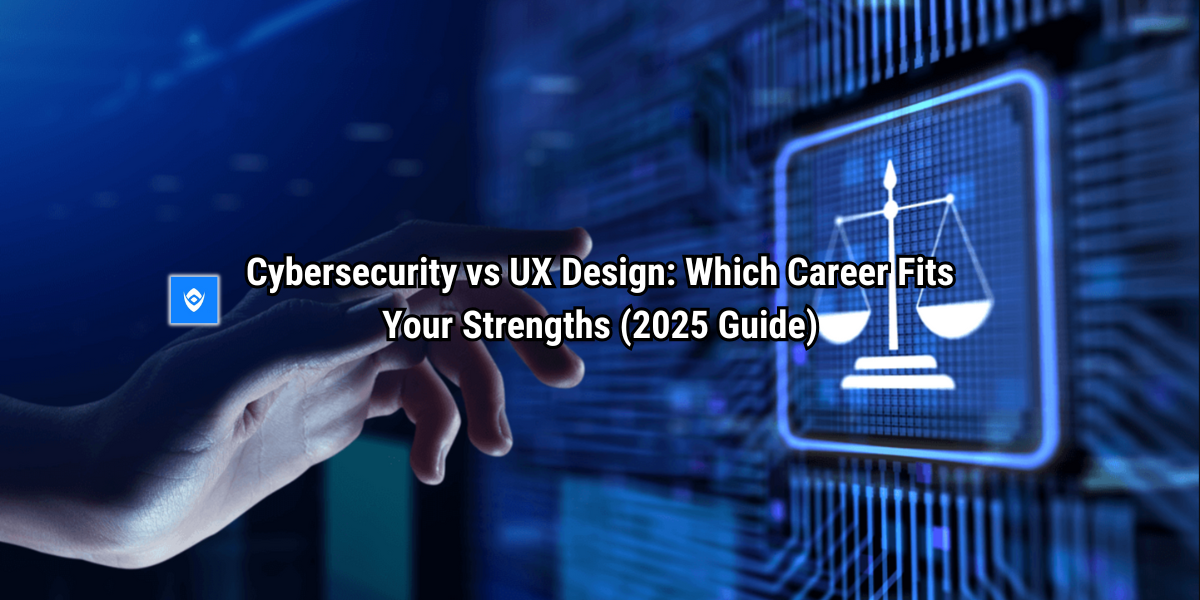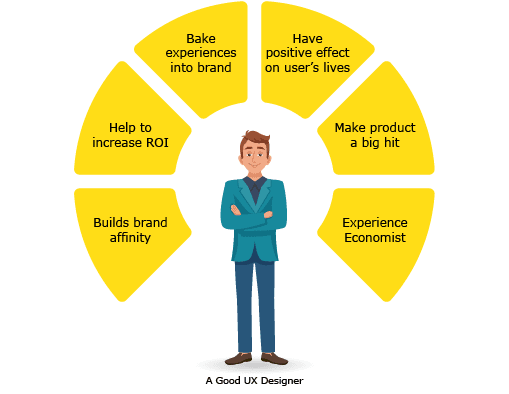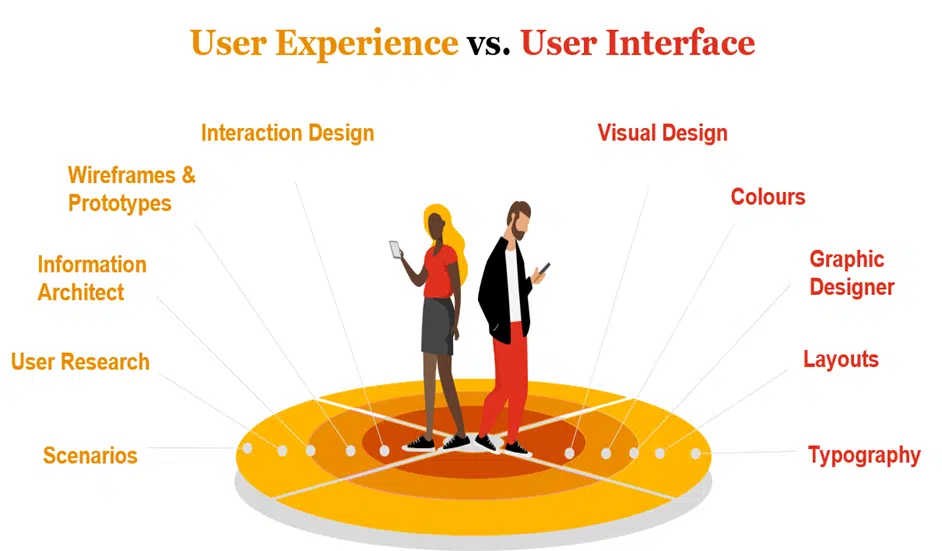
Cybersecurity vs UX Design: Which Career Fits Your Strengths (2025 Guide)
Cybersecurity vs UX Design: Which Career Fits Your Strengths (2025 Guide)
In 2025, two of the fastest-rising careers in technology, cybersecurity vs UX design, are shaping how the world interacts and stays safe online. With over 3.5 million cybersecurity roles still unfilled worldwide and UX design ranking among the top 10 most in-demand digital skills, the choice between these two paths goes beyond just preference; it’s also about positioning yourself for long-term relevance in tech.
Both careers solve critical but opposite problems. Cybersecurity professionals defend digital systems, protecting organizations and users from data breaches, ransomware, and privacy violations. UX designers, on the other hand, create the very interfaces that make those systems usable, accessible, and visually engaging. One focuses on protection, the other on perception, but both are indispensable in an age where security and user experience can make or break a product.
This guide breaks down the roles, skills, salaries, and growth opportunities in each field, giving you a practical lens to decide where you fit best. Whether you’re transitioning from another profession or just starting out, by the end of this article, you’ll know which path aligns with your strengths, work style, and long-term goals.

Start a Life-Changing Career in Cybersecurity Today
What Cybersecurity Professionals Actually Do
Cybersecurity sits at the intersection of technology, risk management, and strategy. It’s the discipline that keeps modern organizations safe from data breaches, financial fraud, and ransomware attacks, threats that now cost the global economy more than $10.5 trillion annually, according to Cybersecurity Ventures.
At its core, cybersecurity is about protecting digital systems and information assets from unauthorized access, damage, or disruption. Professionals in this field build defense systems, respond to incidents, and design frameworks that help businesses stay compliant with international regulations like GDPR, HIPAA, or ISO 27001.
Typical roles include:
- Security Analysts, who monitor network activity and identify vulnerabilities.
- Ethical Hackers (Penetration Testers), who simulate attacks to find system weaknesses.
- Security Architects, who design the infrastructure that prevents those attacks.
- Chief Information Security Officers (CISOs), who oversee entire corporate defense strategies and ensure compliance across business units.
These roles demand more than just technical mastery. A good cybersecurity professional also needs analytical thinking, risk awareness, and problem-solving under pressure. As threats evolve, so must their skillset, whether that’s learning new tools for cloud defense, mastering threat intelligence platforms, or integrating AI-driven security automation into response workflows.
Cybersecurity isn’t only about preventing attacks; you need to maintain trust in every digital interaction. In a connected world where one breach can destroy a company’s reputation overnight, cybersecurity experts serve as the unseen architects of digital resilience.
What UX Designers Actually Do
While cybersecurity focuses on protecting digital systems, UX design (User Experience design) ensures those systems are intuitive, enjoyable, and functional for real people. Every app you open, every website you browse, and every product you interact with has been touched by a UX professional who made deliberate choices about how it should feel, look, and respond.
A UX designer’s job is to bridge the gap between technology and human behavior. They study how users think, what frustrates them, and what motivates them to take action. Using that insight, they shape the design of digital products to be easy to use, visually appealing, and emotionally engaging.
Common roles include:
- UX Researchers, who interview and observe users to uncover hidden pain points.
- UX Designers, who map out how users move through a product and make sure it feels seamless.
- UI Designers, who focus on color, typography, and layout to create a visually cohesive experience.
- Product Designers, who balance user needs with business goals to ensure the product’s success.
UX design requires a mix of creativity and analysis. Professionals use tools like Figma, Adobe XD, and Sketch to build prototypes, while also relying on data from user testing and analytics to make evidence-based design decisions. Empathy is a must-have skill—great UX design depends on understanding the user’s emotions as much as their actions.
Ultimately, UX designers shape how users experience technology. They turn complex systems into friendly interfaces and help products stand out in a market where usability often decides success. In today’s competitive digital space, good design is a business advantage.
RELATED: How Long Does It Take to Learn Cybersecurity?
Cybersecurity vs UX Design — Salary, Demand, and Career Outlook

Both cybersecurity and UX design are excellent career paths, but they grow for very different reasons. Cybersecurity is driven by the rising number of global cyberattacks, while UX design is powered by the need for better, more human-centered digital experiences. Each field offers competitive salaries, long-term stability, and strong global demand, but the motivations behind their growth tell two distinct stories.
In cybersecurity, the talent shortage is staggering. The (ISC)² 2025 Workforce Study estimates a global shortfall of 3.5 million professionals, meaning most organizations are underprotected. That shortage translates into higher pay, faster promotions, and near-total job security. Entry-level analysts typically earn $70,000–$90,000, mid-level engineers or architects make $100,000–$150,000, and senior leaders such as CISOs can cross the $200,000 mark, especially in finance, healthcare, and government sectors.
UX design, meanwhile, has become the competitive edge for companies fighting to retain customers in a digital-first world. Research from Adobe and LinkedIn shows that companies investing in UX outperform the S&P 500 by over 200%. Salaries mirror that importance: entry-level designers earn $60,000–$80,000, mid-level roles range between $80,000–$110,000, and senior product or UX strategists can make $120,000–$150,000 or more in leading tech markets.
| Aspect | Cybersecurity | UX Design |
| Core Focus | Protecting systems and data | Enhancing usability and experience |
| Entry Salary | $70,000–$90,000 | $60,000–$80,000 |
| Mid-Level Salary | $100,000–$150,000 | $80,000–$110,000 |
| Senior Salary | $150,000–$200,000+ | $120,000–$150,000 |
| Job Demand | Global shortage of professionals | High demand for digital experience experts |
| Career Stability | Extremely high | High, but trend-driven |
| Top Industries | Finance, healthcare, government | Tech, e-commerce, education, startups |
While cybersecurity may edge ahead in pay and job security, UX design offers broader creative freedom and cross-industry flexibility. In both cases, the real advantage lies in choosing a career that aligns with how you think, create, and problem-solve.
Work Culture and Lifestyle Differences
The day-to-day experience in cybersecurity and UX design couldn’t be more different, even though both professionals often work on the same products. Understanding how each culture operates can help you choose a path that fits your personality and preferred work rhythm.
Cybersecurity roles are typically structured, reactive, and high-stakes. Professionals work in fast-paced environments where a single oversight could expose sensitive data or cost a company millions. Workdays often involve incident monitoring, system audits, risk assessments, and compliance reviews.
In critical sectors, like banking, healthcare, or defense, security teams may operate on 24/7 monitoring schedules, meaning late-night alerts or emergency response drills are part of the job. The reward? Every day feels like a mission, and the sense of responsibility is unmatched.
UX design, on the other hand, thrives in collaborative, iterative, and creative settings. Designers often work in sprints with developers, marketers, and product managers to test ideas and refine visuals. The pace can be intense near product launches, but it’s generally more flexible and feedback-driven than cybersecurity. Brainstorm sessions, design reviews, and user testing are part of the rhythm, and remote or hybrid setups are increasingly common.
The main difference lies in mindset:
- Cybersecurity professionals are problem-solvers under pressure, driven by logic and precision.
- UX designers are storytellers and builders, motivated by empathy and creativity.
If you enjoy tackling complex threats in high-responsibility environments, cybersecurity will challenge and fulfill you. But if you prefer creating visual harmony and improving how people interact with technology, UX design offers a more expressive, team-oriented culture.
ALSO SEE: Enterprise Security vs Cybersecurity: What You Need to Know in 2026
Educational Pathways and How to Get Started

Both cybersecurity and UX design are skills-first careers, meaning your ability to perform matters more than traditional degrees. Still, each field has a unique entry route that determines how quickly you can land your first role.
Cybersecurity has multiple entry points, but most professionals begin with a technical foundation in information technology, networking, or computer science. Certifications are the main credibility builders in this field.
Beginners often start with CompTIA Security+ or Certified Ethical Hacker (CEH), while more advanced professionals pursue CISSP, CISM, or ISO 27001 Lead Implementer certifications. Bootcamps and training programs, such as the 5-Day Cybersecurity Job Challenge led by Tolulope Michael, offer fast, structured transitions for career changers without prior IT backgrounds.
Typical progression looks like this:
- Learn basic networking, cloud, and system administration.
- Take foundational certifications (Security+, CEH).
- Build hands-on experience via labs or simulations.
- Specialize in a track, such as Governance, Risk & Compliance (GRC), Cloud Security, or Penetration Testing.
UX design, in contrast, values creative portfolios over credentials. While degrees in graphic design, psychology, or human-computer interaction help, many designers are self-taught through online platforms like Coursera, Interaction Design Foundation, or Google’s UX Design Certificate. The fastest path is to learn design principles, master tools like Figma or Adobe XD, and build real projects that demonstrate usability thinking.
Typical progression:
- Learn the fundamentals of user research, interface design, and usability testing.
- Create 2–3 strong case studies in your portfolio.
- Collaborate with developers or volunteer on real product designs.
- Apply for UX internships or junior designer roles.
Timeline to entry-level readiness:
- Cybersecurity: 6–12 months (with guided training or bootcamp).
- UX Design: 4–9 months (with portfolio development and consistent practice).
MORE READ: Home Wi-Fi Network: A Complete Guide
Decision Framework — Which Tech Career Suits You?
If you’re torn between cybersecurity and UX design, the smartest move isn’t to follow hype; it’s to match your personality, strengths, and work style to the right career. Both paths are rewarding, but they attract very different kinds of thinkers.
Use the quick framework below to see which direction feels more natural:
| Trait / Preference | Cybersecurity | UX Design |
| You enjoy… | Solving logical puzzles, detecting risks, staying one step ahead of threats | Creating intuitive experiences, designing visuals, understanding human behavior |
| You thrive under… | Pressure, deadlines, real-world impact | Collaboration, feedback, creativity |
| You prefer… | Technical tools and systems (networks, firewalls, code) | Design tools (Figma, Adobe XD, prototypes) |
| You think in terms of… | Data, risks, compliance | Emotions, stories, usability |
| You measure success by… | Security, stability, and zero breaches | Engagement, ease of use, and visual delight |
| You’d rather… | Stop hackers before they act | Help users love what they use |
If you chose mostly Cybersecurity: You’re strategic, analytical, and calm under pressure. You like solving high-stakes problems that protect people and data. The cybersecurity field will give you structure, strong career stability, and above-average pay.
If you chose mostly UX Design: You’re empathetic, creative, and energized by collaboration. You enjoy shaping how people feel when using technology. UX design offers artistic freedom, flexible work setups, and the chance to directly influence how users experience products.
If you scored evenly: Hybrid careers are emerging, like Secure UX Design and Privacy UX, where designers and security experts collaborate to make systems both safe and simple. These niches will define the next decade of digital innovation.
In short, cybersecurity protects the digital world, while UX design perfects how humans interact with it. Your best fit depends on what excites you more, solving threats or shaping experiences.
Where Cybersecurity and UX Overlap
Though they appear to live on opposite ends of the tech spectrum, cybersecurity and UX design increasingly intersect in what’s now called secure-by-design development. The principle is simple: digital products should be both safe and seamless. Security without usability frustrates users; usability without security invites risk.
This intersection is where collaboration becomes essential. A cybersecurity team might recommend multi-factor authentication, while UX designers ensure it’s simple and intuitive, for example, using biometric verification instead of complex passwords. Similarly, when security experts design privacy notices or data-consent prompts, UX designers translate that into clear, non-technical language that helps users make informed choices.
Another growing overlap is in privacy UX, a field that combines compliance awareness with human-centered design. Here, designers work hand in hand with security professionals to create transparent consent flows, friendly warning messages, and layouts that discourage unsafe behavior, without overwhelming users.
From banking apps to healthcare portals, the most successful digital products now emerge from this balance between defense and design. As data protection laws tighten worldwide and digital trust becomes a competitive advantage, professionals who understand both disciplines will hold a unique edge in the job market.
Conclusion
Whether you’re drawn to defending systems from cyber threats or designing digital experiences that delight users, both cybersecurity and UX design promise fulfilling, future-proof careers. Each offers strong demand, flexible opportunities, and room for creativity, just expressed in different ways.
Cybersecurity rewards those who think logically, anticipate problems, and thrive in structured, high-responsibility environments. UX design fulfills those who think visually, empathize deeply, and enjoy shaping how people interact with technology. Both roles are essential to the trust and functionality of the modern digital world.
Ultimately, the best path isn’t about which pays more or trends faster—it’s about alignment. Choose the field that fits how you think, what you enjoy, and the kind of impact you want to make. Because in today’s interconnected world, the future belongs to professionals who don’t just use technology—but understand how to protect it or perfect it.
FAQ
Can you make $500,000 a year in cybersecurity?
Yes, but it typically happens at the executive or consulting level. Senior leaders such as Chief Information Security Officers (CISOs) in Fortune 500 companies, or independent consultants handling high-risk contracts, can cross the $400,000–$500,000 range when bonuses, stock options, and performance incentives are included. These professionals often have 10–15 years of experience, advanced certifications, and oversee large-scale enterprise risk strategies.
Why do people quit cybersecurity?
The main reasons include burnout, pressure, and rapid change. Cybersecurity roles can be mentally demanding due to constant monitoring, evolving threats, and 24/7 response expectations. Many professionals leave because of stressful work environments or lack of work-life balance, not disinterest. However, the industry is improving, with more companies adopting shift rotations, mental health programs, and automated systems that reduce alert fatigue.
Is UX a dead field?
Not at all, UX is advancing, not disappearing. The demand for user-centered design is expanding into new technologies like AI interfaces, wearable devices, voice UX, and mixed reality. While some design tasks are being automated, the strategic and human aspects of UX, research, empathy, usability testing cannot be replaced. In fact, LinkedIn ranked UX design among the top digital skills for 2025, showing it’s still one of the most future-proof creative tech careers.
Is AI replacing the UX designer?
AI is augmenting, not replacing, UX designers. Tools like Figma AI or Adobe Firefly automate repetitive tasks, like layout suggestions or color pairings, but they can’t replicate human empathy, judgment, and creativity. UX design relies on understanding human emotion, context, and motivation, areas where AI still lacks intuition.
Instead of competition, the future points to collaboration: designers who learn how to work with AI will design smarter, faster, and more data-informed user experiences.
